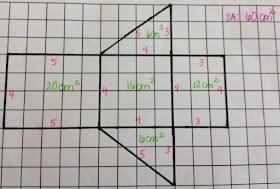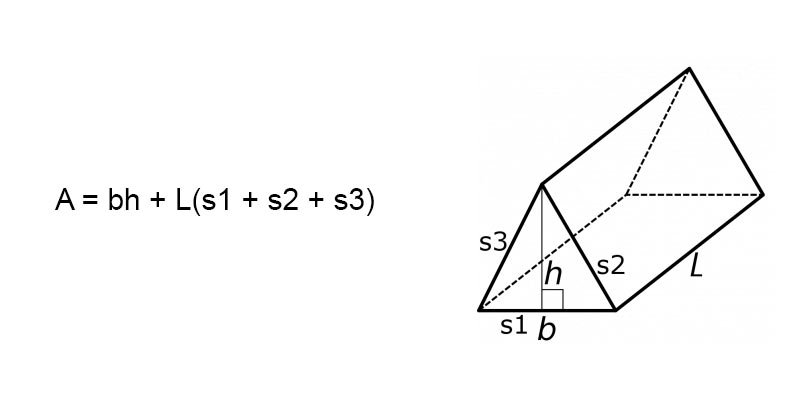


Okay, we know it's hard to keep your eyes away from the floaty unicorn, but let's get back to the problem at hand! If the pool is rectangular with a flat bottom, then what we're dealing with is precisely a rectangular prism! Let's look at a pretty picture to see it clearly. Let's say that you're trying to tile a swimming pool, and want to know the area you have to tile. Observe, that, together with the base area, this allows us to translate the surface area of a rectangular prism formula intoĪ = 2 * A_b + A_l = 2 * l * w + 2 * l * h + 2 * w * h. All in all, we obtain that the lateral area, or A_l as we call it, is Also, the other side of one of the pairs is equal to the first base edge, say l, and the other is equal to the length of the second one, which is w. All of those have one side equal to h, the lateral edge (or the height) of the prism. What is more, among the four, there are two pairs of identical ones (the front and back wall, and the left and right wall). We have four faces contributing to that number, all of them rectangles. Piece of cake, wasn't it? Well, let's now try to do something a little bit more complicated and move on to the lateral area. And that is precisely the formula for the base area: With our notation, it is a rectangle with sides l and w, so it's area is l * w. Now, let's use that information to study the base of our prism. Recall that all the faces in our calculator are rectangles, and the area of a rectangle is calculated by multiplying its side lengths. Surface_area = 2 * base_area + lateral_area, Therefore, since the solid has two bases (the bottom one and the top one), the surface area of a rectangular prism formula is as follows: On the other hand, A_l denotes the lateral area, meaning the total area of the four lateral faces. Note, that A_b denotes the surface area of a single base of our prism.
Area of a prism how to#
Time to put the high-brow words aside, and focus on how to find the surface area of a rectangular prism. Lastly, the sides of each rectangle are called edges (again divided into base edges and lateral edges). The bottom and top faces of the box are called bases, and each of the other four is called a lateral face. Note, that this, in particular, means that there are three pairs of identical faces, placed on opposite sides of the solid.Īlso, as with any other scientific definition, there are a few fancy names associated with the prism. Well, that is a rectangular prism! Or do you remember those drawings of houses that we did in kindergarten? Remove the angular roof, and you're left with another example of a rectangular prism.įormally (mathematically), a right rectangular prism is a solid where all six sides are rectangles that are perpendicular to one another.

Area of a prism full#
A regular, rectangular box, just like the ones you see in the supermarket, full of whatever products. If you do not have access to a color printer, but think that colors would support your students, you can have them color the rectangles on the printout before cutting and assembling the prism.Before we see what the surface area of a rectangular prism is, we should get familiar with the prism itself.
Area of a prism code#
If you have access to a color printer in your classroom, you may want students to change the code of front to better match what they see in the image of prism and code the remaining faces with solid rectangles to match the image they are looking at. The sample definition was written to make the image of an outlined rectangle with a black and white printer in mind. Click run and test each of them in the interactions area to make sure that they match the prism you started with. Start adding definitions on line 18 and add a line for each definition so that all of the faces are defined between front and lst. Just as front has been defined to draw a rectangle whose dimensions are width and height, you will need to write definitions for each of the other faces of the prism the you put on your list. Once you complete your list, go back up to line 17 and look at the definition for front. Add the names of each of the remaining faces to the list. This list will include all of the faces of the prism, bu right now it only includes front. It reads (define lst (list front)), which defines lst to be a list of values. How would you describe the faces of this prism?


 0 kommentar(er)
0 kommentar(er)
